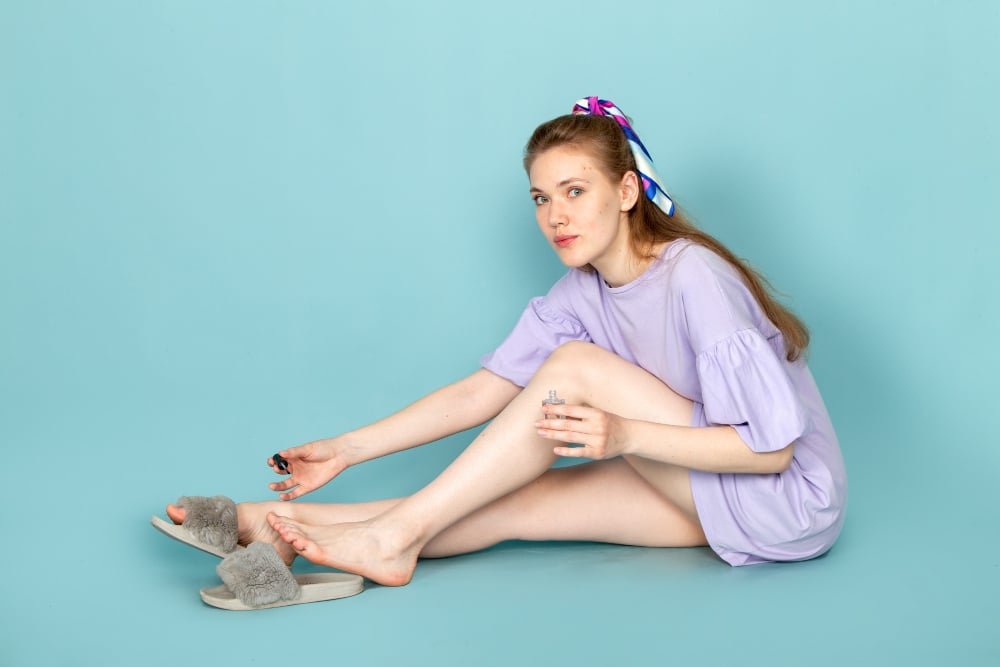
Maintaining smooth and hairless skin can be tedious, but sugaring and waxing can make it much more manageable. Both sugaring and waxing are effective hair removal methods that provide long-lasting results, but it’s essential to understand your hair growth cycle to get the most out of these routines. This article will explore the hair growth cycle, how it affects sugaring and waxing, and tips for optimizing your hair removal routine.
Understanding the Hair Growth Cycle
The hair growth cycle has three phases: anagen, catagen, and telogen. Each hair on our body goes through this cycle independently, which is why not all hairs fall out simultaneously. Let’s take a closer look at each phase:
Anagen Phase
This is the growth phase of the hair follicle, and it can last anywhere from 2 to 7 years. During this phase, the hair grows up to 1cm per month.
Catagen Phase
This transitional phase lasts about ten days. During this time, the hair follicle shrinks, and the hair stops growing.
Telogen Phase
This resting phase lasts about three months. During this phase, the hair follicle is dormant, and the hair is just sitting in the strand waiting to be shed.
After the telogen phase, the hair disappears, and the cycle starts again. We shed about 50 to 100 hairs daily, which is normal.

How Hair Growth Cycle Affects Sugaring & Waxing
To get the most out of sugaring and waxing, it’s essential to understand how the hair growth cycle affects these hair removal methods. The ideal time to sugar or wax is during the anagen phase because the hair is attached to the follicle and is easier to remove. If you sugar or wax during the catagen or telogen phase, the hair may not come out quickly, leading to breakage, ingrown hairs, and irritation.
Waiting for the hair to reach the anagen phase can take some time, but the results are worth it. You’ll notice smoother skin for a more extended period, and your hair will grow back slower and thinner with each session.

Tips for Optimizing Your Hair Removal Routine
Now that you understand the hair growth cycle and how it affects sugaring and waxing, here are 5 tips to optimize your hair removal routine:
1. Be patient
Waiting for the hair to reach the anagen phase can take time, but it’s worth it. If you sugar or wax during the catagen or telogen phase, you’ll have more breakage, ingrown hairs, and irritation.
2. Exfoliate
Exfoliating your skin before and after sugaring or waxing can help remove dead skin cells, prevent ingrown hairs, and improve the overall texture of your skin.
3. Moisturize
After sugaring or waxing, your skin may be more sensitive and dry. Moisturizing can help soothe the skin and prevent irritation.
4. Avoid the heat
Avoid taking hot showers, saunas, or exercising for 24 hours after sugaring or waxing. Heat can cause your skin to become more sensitive, leading to irritation.
5. Schedule your appointments
Schedule your sugaring or waxing appointments based on your hair growth cycle to get the best results. The ideal time to sugar or wax is during the anagen phase, which can take 4 to 6 weeks to reach.

In conclusion, understanding your hair growth cycle is crucial for achieving the best results from your sugaring and waxing routine. By knowing the different stages of hair growth and timing your hair removal accordingly, you can minimize discomfort, reduce the risk of ingrown hairs, and achieve smoother, longer-lasting results.
